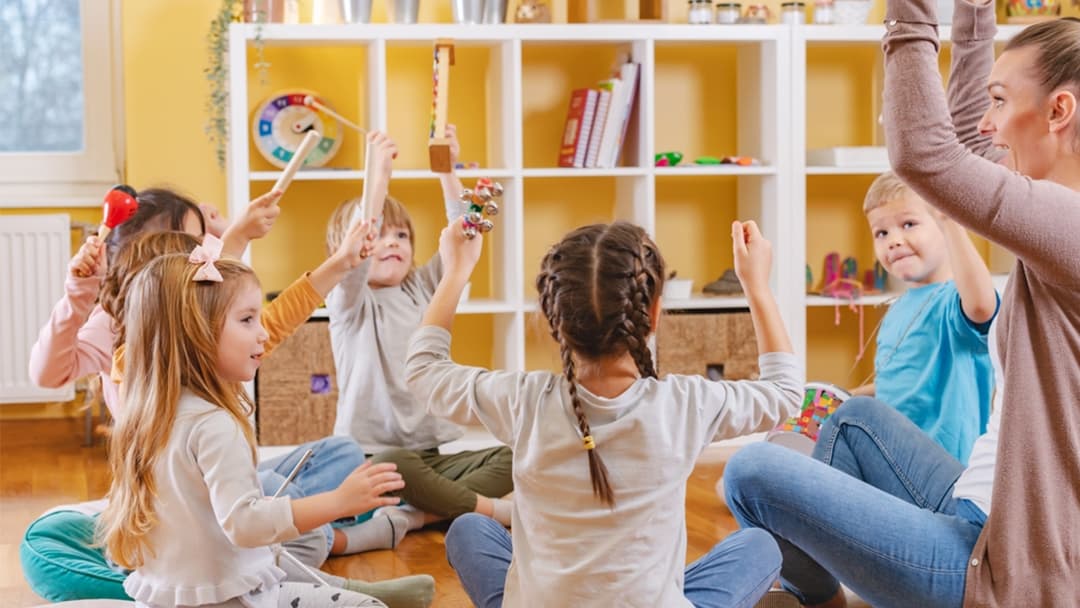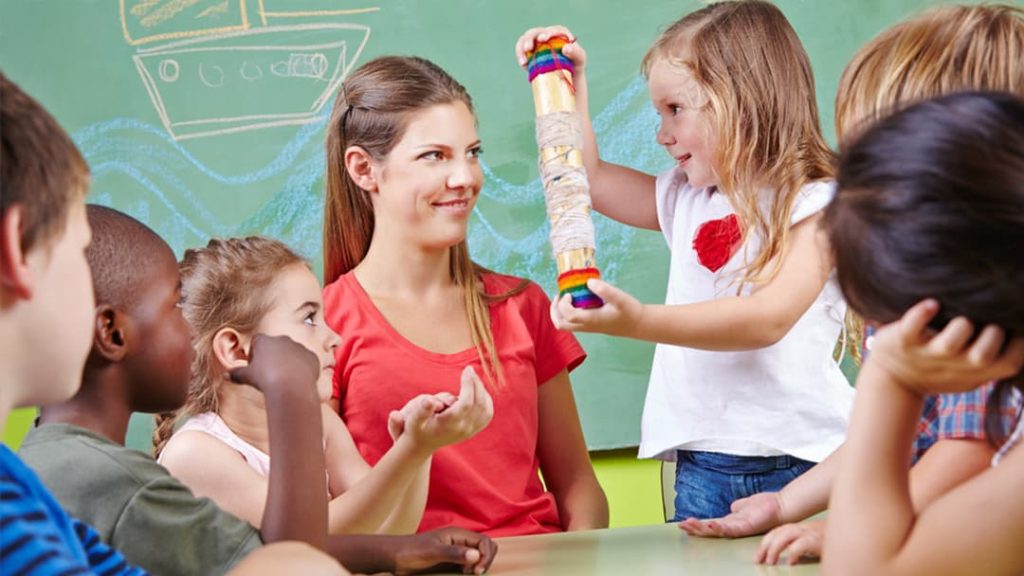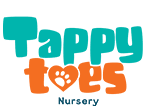
Different Paces of Learning in Early Childhood
How fast should my child be learning and developing skills? This question is common among parents, especially for first-time parents eagerly tracking their baby’s growth. The pace of learning in early childhood varies significantly between children. Understanding the different factors that impact a child’s brain development stages can help parents embrace their child’s unique timeline.
What Impacts the Pace of Learning in Child Development Stages?
Baby development stages are influenced by various factors that contribute to their overall pace of growth. Multiple key factors determine a child’s learning speed.
Genetics
A major influence is simply genetics. Just as children inherit physical traits from parents, development patterns also have genetic links. Your child may follow the same timeline if you or your partner spoke in sentences late or learned to read early. DNA provides the basic blueprint, but genes only express themselves under the right conditions. Environmental factors and experiences still play a crucial role.
Birth Factors
Various birth factors can impact initial development. Premature babies often reach physical milestones more slowly. Their early arrival means missing further growth within the womb. Full-term babies can also experience complications. Birth injuries, low birth weight or infections can all temporarily delay development. These children often catch up over time.
Parental Care
Loving, responsive parenting accelerates learning. Young children thrive when caregivers provide affection, talk often, and engage in two-way interactions. This nurturing attention builds crucial brain architecture. Reading daily, singing songs, playing games, and offering new experiences stimulate a child’s mind. Enriching activities with parents teaches children essential communication and thinking skills.
Environment
Physical spaces shape children’s opportunities to explore and learn. Cluttered, chaotic settings limit focus and mobility. However, organised rooms with diverse toys, objects, and activities spur curiosity and discovery. Outdoor time matters, too. Natural environments cultivate sensory and motor skills. Frequent child-directed play outdoors is ideal.
Culture and Family Dynamics
Family cultures and dynamics range widely. Beliefs about learning readiness and appropriate methods vary. Some emphasise letter recognition by age 3, while others focus solely on play. Certain cultures also have very defined roles for different ages. More communal child rearing means young members quickly learn from older children. These cultural influences substantially impact the pace of different kinds of learners.
Language Exposure
Language-rich communication is rocket fuel for infant and toddler brains. Children hearing more words and meaningful interactions hit verbal milestones sooner. Vocabulary building occurs through two-way, responsive dialogue. Babbling and gestures provide the foundation for speech. Caregivers who consciously promote interaction through baby sign language, songs, and conversation nurture communication skills.
Sibling Factors
Birth order and sibling spacing influence pace, too. Firstborns receive undivided parental attention. However, second and later, children pass milestones faster by observing and copying older siblings. Spacing also matters. Significant gaps offer parents more time for infant engagement. Close spacing often accelerates the younger child.
Temperament
Temperament refers to natural inclinations in one’s personality that become apparent from a young age. Key traits related to pace include adaptability, distractibility and intensity. Children with easier temperaments happily explore new situations, which accelerates learning. More vigilant toddlers advance slower by observing for a while first.
How to Support Your Child’s Pace of Learning
Validating each child’s developmental path comes first. Communicate through words and actions that they are okay exactly as they are. Shame and stress disrupt cognitive functioning – warmth and unconditional love nourish it.
Next, figure out what your child likes and naturally enjoys doing. Look for activities that they find easy but still challenging – like a perfect fit. If you make things too hard too quickly, it might make learning slower.
For example, let highly verbal toddlers lead storytelling activities. Physical learners will shine, mastering a climbing wall—tailor experiences to build on strengths.
When they reach an edge of frustration, offer empathy. Avoid rescuing or taking over. Convey belief they will get there with practice. Then, collaborate – “let’s break this big goal down into smaller steps together”.
This gradual challenge of honouring the child’s pace builds resilience and confidence to take healthy risks, and soon enough, their capabilities will blossom in empowering ways.
The Ever-Changing Pace of Early Childhood Development
Learning during early childhood education rarely occurs linearly. Children might excel in specific skills while temporarily slowing progress in others due to intense focus. Uneven spurts occur as their brains and bodies develop, resulting in variations such as excelling in early math but struggling with tasks like buttoning coats. Each child progresses at a unique pace.
Creative differences also emerge, where a toddler might construct a flawless block tower but face challenges in colour identification. Learning paths resemble individual streams rather than a uniform river.
Rather than anticipating uniform skill development by age, it is beneficial to appreciate the diverse ways children discover the world. Trust their innate ability to navigate the next developmental steps precisely when ready.
When to Seek Early Intervention for Developmental Delays
Despite wide normal ranges, significant delays beyond these ranges occasionally occur. Many children do catch up independently in time. However, early professional support can optimise outcomes in the long term.
By age 2, chronic issues in several vital milestones increase risks for lasting struggles. These include:
- Little to no speech
- Not walking
- Minimal pointing or gesturing
- Poor eye contact
- Minimal interest in surroundings
- Extreme disconnect from parents
Working with developmental specialists when delays persist past 15-18 months matters greatly. Catching issues early may also reveal an underlying condition needing accommodation.
Supporting Children Wherever They Are
Meeting children where they currently are developmentally benefits all. Pushing too hard only increases frustration and resistance. Insisting on age-based expectations disrespects their journey.
However, providing support doesn’t imply facilitating a lack of effort. By offering thoughtful and creative assistance designed to capture their interest, consistent and gentle encouragement can guide almost any child forward when they show readiness by:
- Showing interest in participating
- Focusing attentively on an activity
- Practising eagerly toward a goal
Still, patience is needed. Not all children travel the same road at the same speed – and none ride perfectly smoothly! What remains constant is every child’s fundamental capacity to learn and thrive. Where we see them now does not dictate where they will end up developmentally.
The Freedom to Learn at Your Own Pace
At Tappy Toes Nursery, your child will never feel rushed or insufficient. We believe that the freedom to learn at one’s own pace of learning fosters future flourishing.
Rather than impose expectations, we thoughtfully nudge children beyond their growing edge when they demonstrate readiness. Our flexible programs are tailored to your child’s interests, abilities and unique ways.
Our mixed age groupings and emergent curriculum encourage natural mentoring, too. Inspiration occurs spontaneously as children play and learn alongside others with different skill sets. Trying what their friend can do often sparks fresh motivation to grow new capacities!
Most of all, your child will feel safe, respected and loved right where they are developmentally today. We firmly know the joyful self-confidence nurtured now unleashes their highest potential unfolding in their own time.
Ready to trust your child’s natural developmental pace? Reach out today to learn more about our whole child approach at Tappy Toes Nursery. The doors of discovery stand wide open for your little explorer here!

